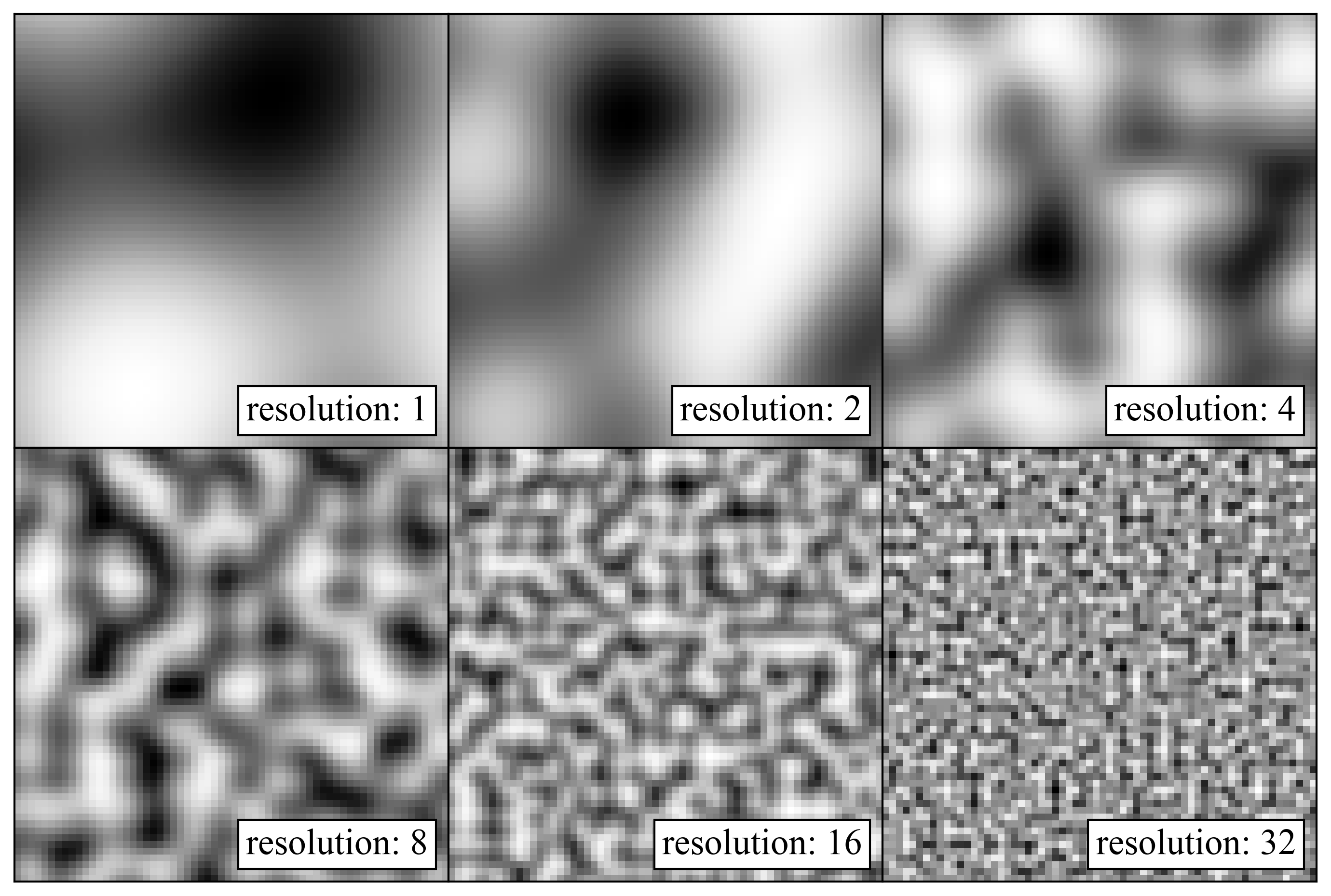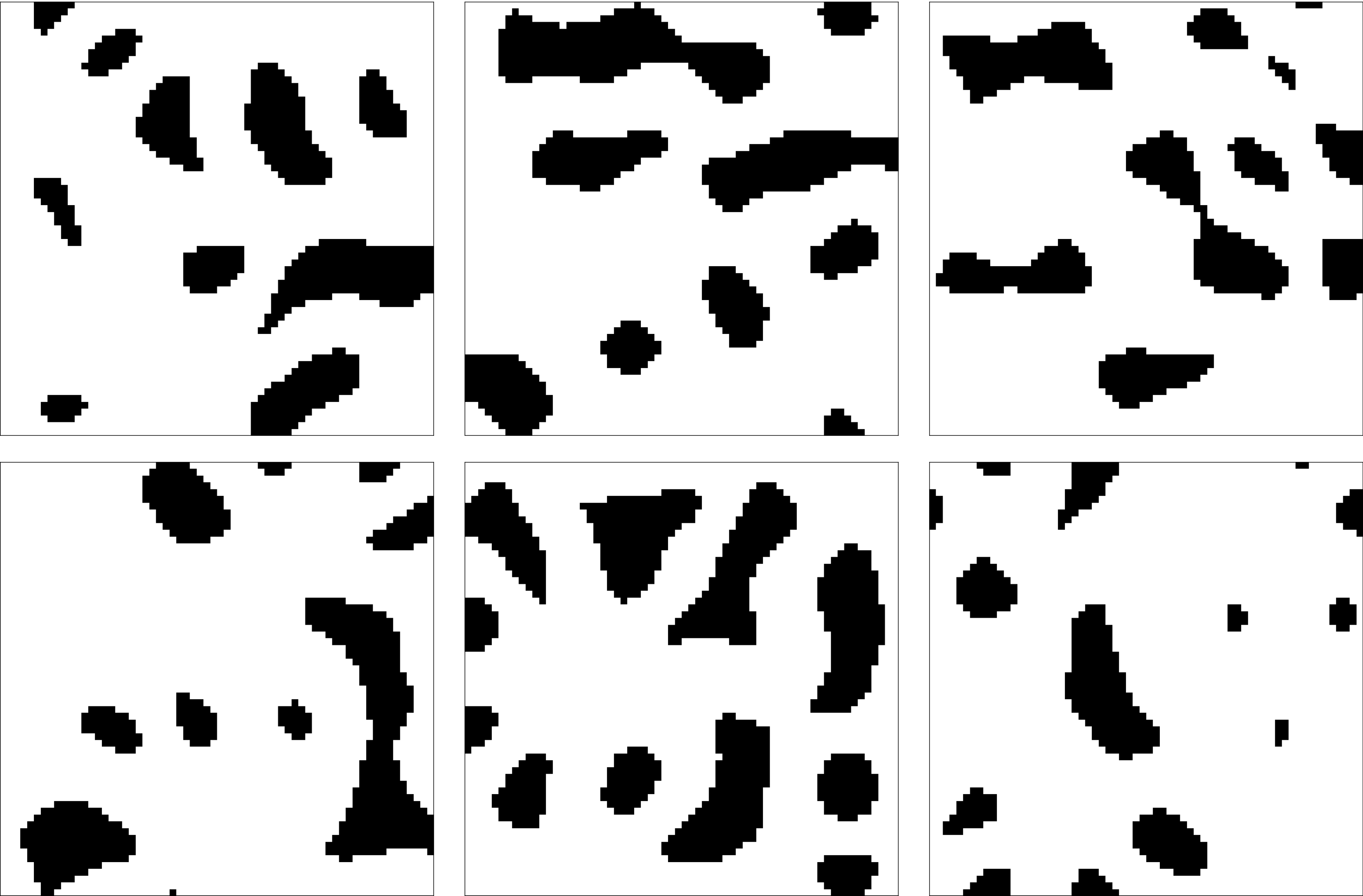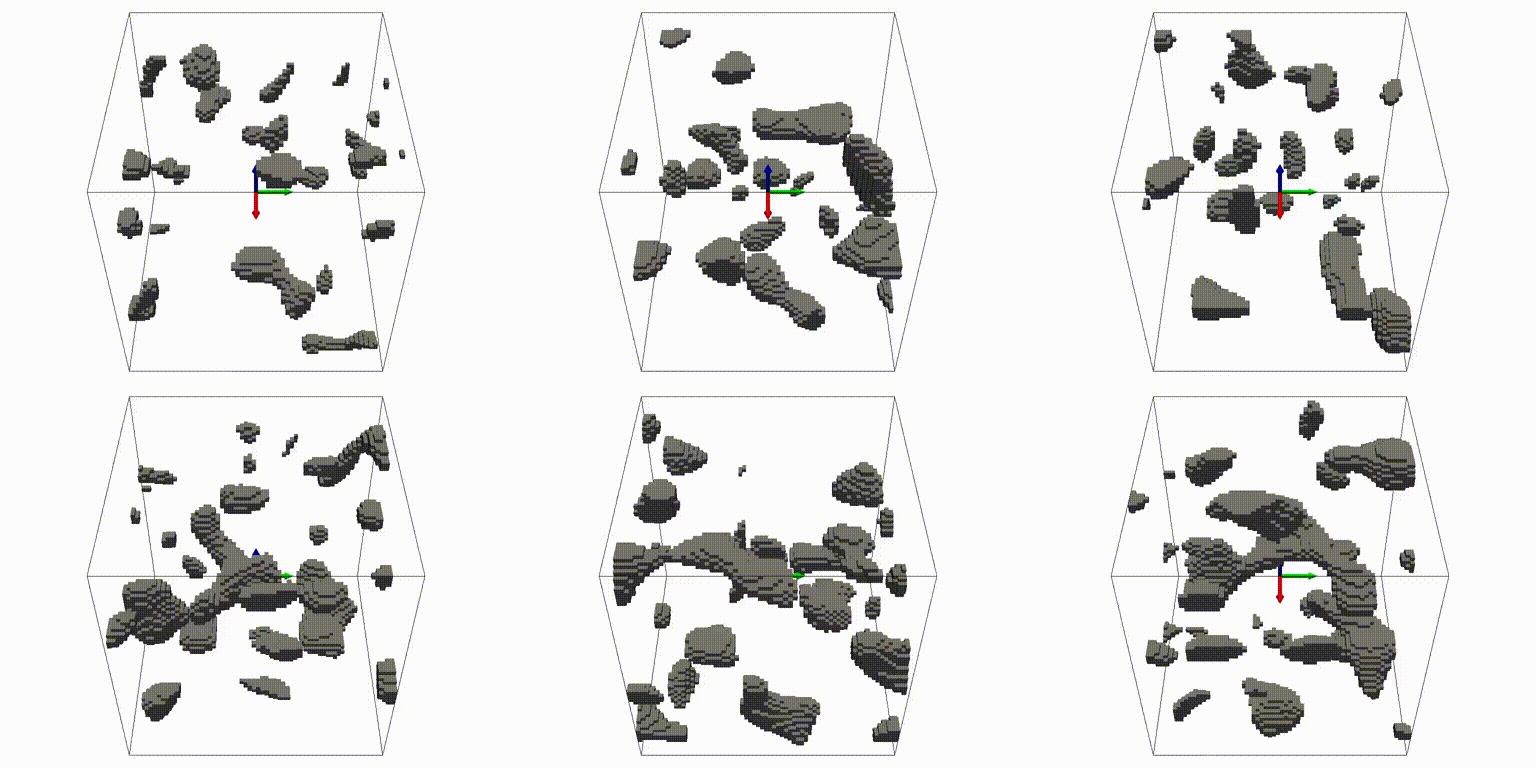Worlds
We used Simplex Noise to generate a wide variety of challenging worlds for our robots. Like its predecessor Perlin noise, Simplex noise is a gradient noise used as a procedural texture to increase the realism in computer graphics. It is, for example, used in computer games to produce always new worlds.
In our case, we used a 64x64 binary occupancy grid for the environments of our robots. Agile Justin uses to the same representation to map the world Wagner2013, and finally we want to apply our methods on this humanoid robot. To get from a continuous noise to a binary occupancy grid, we applied a threshold.
| Noise Field | Occupancy Grid |
|---|---|
 |
 |
| A continuous noise field, where each pixel has a value between 0 and 1. It can also be interpreted as a normalized height map. | This animation shows the influence of the threshold on the occupancy map, from a free plane to completely occupied. |
 Changing the resolution changes the frequency of the noise.
To create variety on different resolution levels (elevation: continents/mountain range/hill), one can overlay different noise scales.
Changing the resolution changes the frequency of the noise.
To create variety on different resolution levels (elevation: continents/mountain range/hill), one can overlay different noise scales.
2D Examples
 Examples of 2D worlds all with the same noise resolution and threshold, to see the diversity
of one single configuration.
Examples of 2D worlds all with the same noise resolution and threshold, to see the diversity
of one single configuration.
3D Examples
 The same procedure can be applied in 3D, and we use it to generate the asteroid field for our robots.
The same procedure can be applied in 3D, and we use it to generate the asteroid field for our robots.